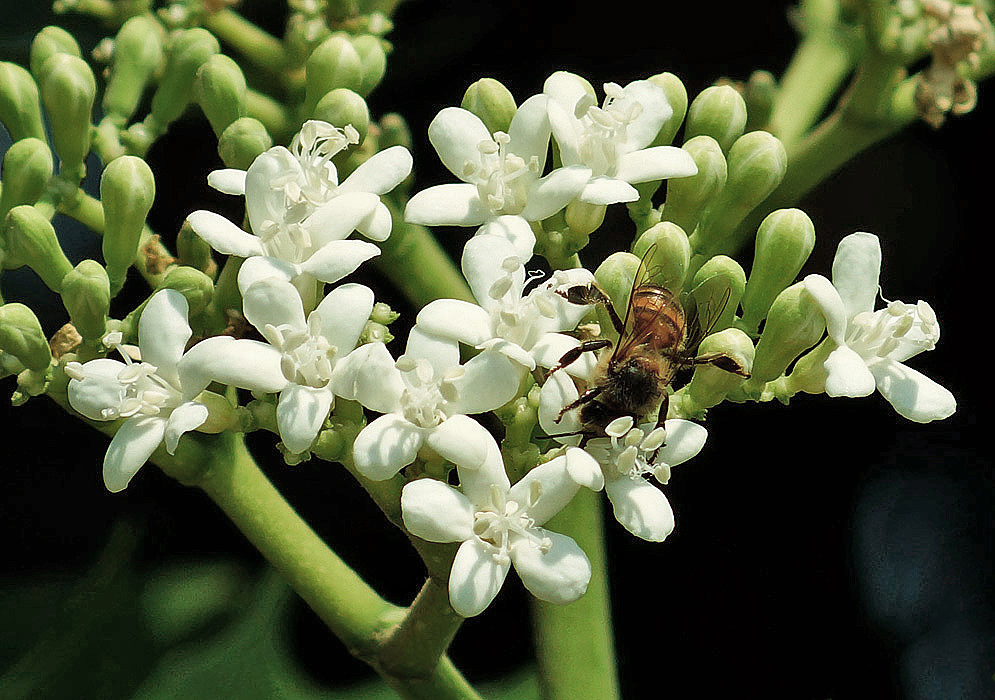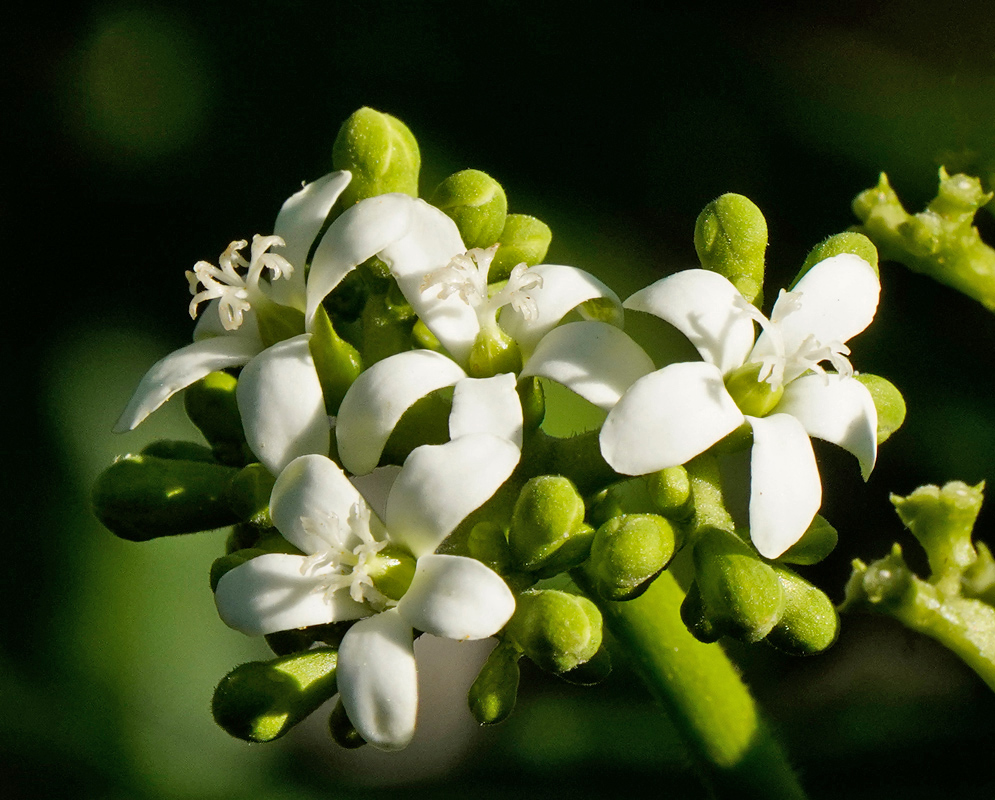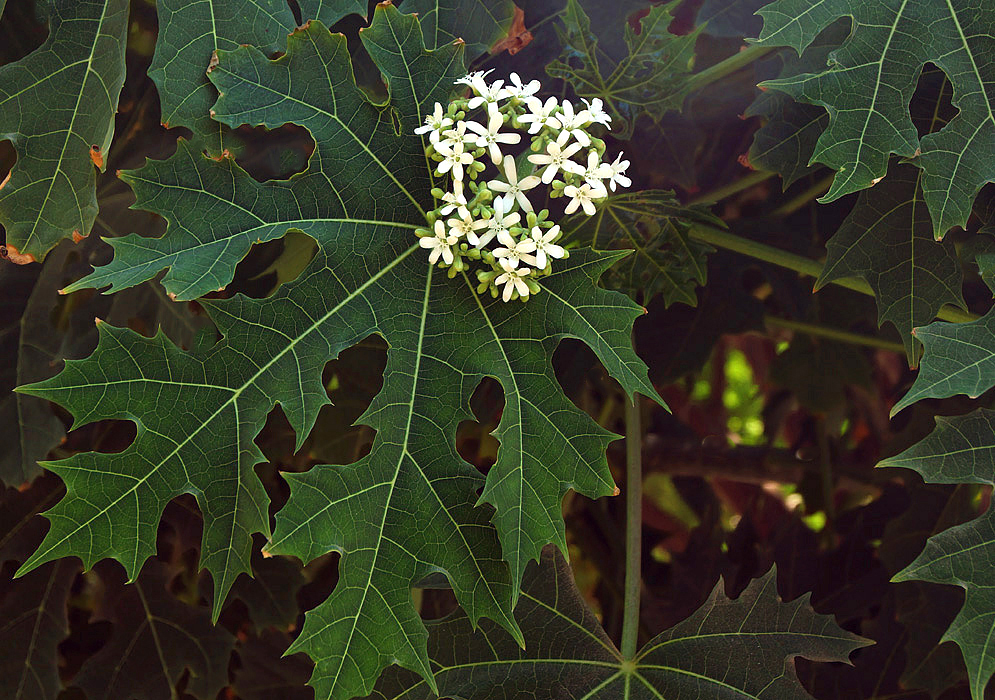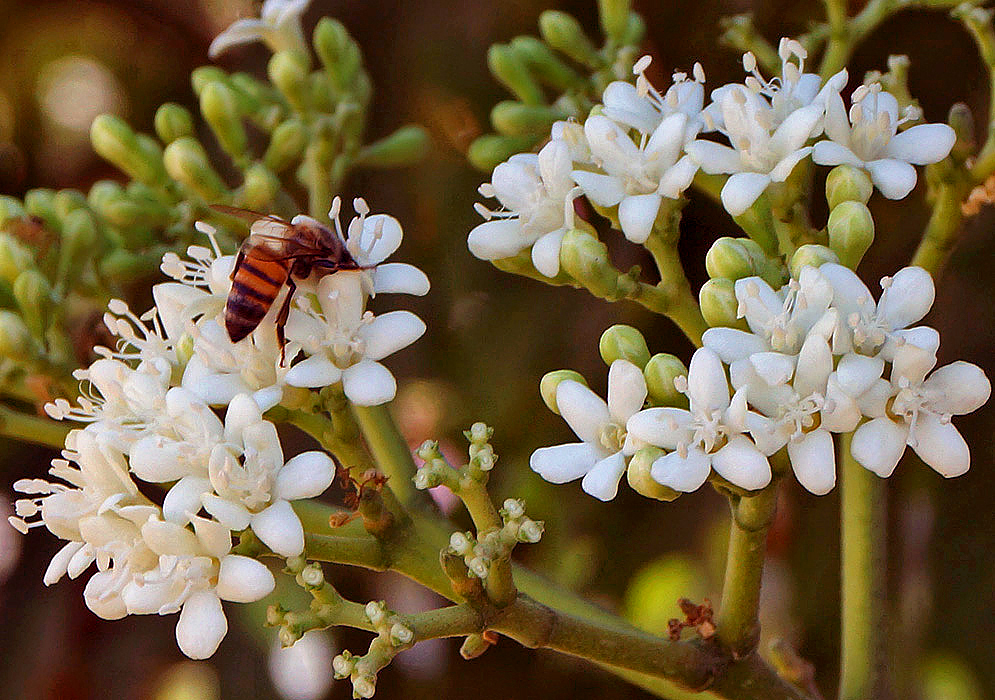This post has 11 Simple Fields-fields attached. Show fields.

Native to Central America and northern South America. The young leaves and shoots, once cooked, find their way into stews and soups, either alone or mingling with other vegetables and meats, as they are toxic otherwise. The taste is somewhat like spinach and may have more nutrients than spinach leaves. It is a good source for protein, vitamins and antioxidants. A popular concoction in Yucatan blends raw chaya leaves with sugar water, lemons, pineapple, and other fruits, believed to enhance virility. Chaya leaves serve as forage for domestic animals. The plant's medicinal repertoire is vast, credited with the ability to strengthen fingernails, darken graying hair, alleviate symptoms of alcoholism, diabetes, insomnia, various skin disorders, venereal diseases, and gout, and even to boost brain function and memory. However, it's crucial to note that most of these medicinal claims have not undergone rigorous scientific validation. Classified as a monoecious shrub or small tree, it can tower up to about 20 feet, showcasing a pale thick trunk and usually armed with stinging hairs, although cultivated forms are unarmed. The inflorescence is a dichotomous cyme, leading to unisexual, regular flowers without petals. The male flowers exhibit 10 united stamens in two whorls while the female flowers carry a superior, 3-celled ovary with three styles connate at the base. The flowers attract a lot of bees. Photographed in Barranquilla, Colombia.







